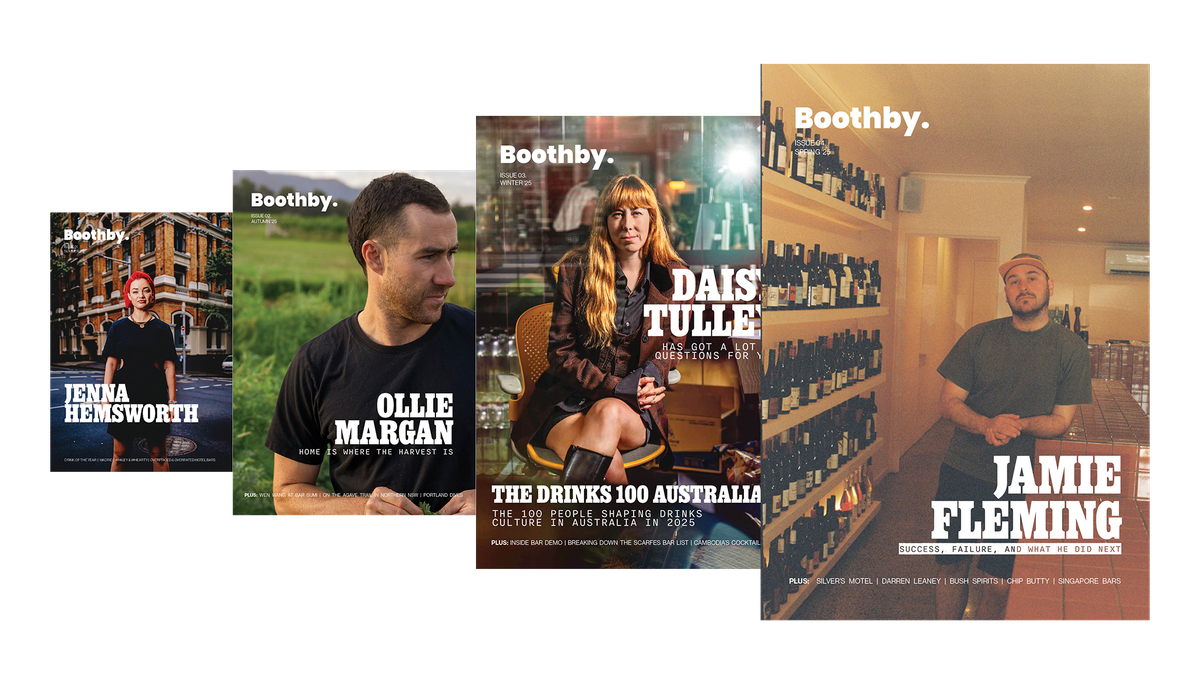Welcome to Sidecar No Sugar, a weekly Boothby newsletter about Brisbane bars and the people, work and creativity that grounds it. (You can sign up to get it in your inbox each week, right here.) This week, I’ve got a piece on the Australian pub that ran in print in the previous issue of Boothby.
If you have info the Brisbane bar community should know, please email me contact@beccawang.com.au or send me a message via Instagram (@supper.partying).
As the child of Chinese immigrants, I had a textbook Australian upbringing: ordered tuckshop every Friday, stayed at the beach over Christmas and barbecued sausages and onions in the public park. The first time our family from China visited, they said they wanted to visit a pub. My father asked, “What’s good about a pub? They’re everywhere.” They said they had read that Australians visit pubs often and were fascinated as to what they were about.
Up until that point, my father had never stepped foot in a pub. He quit drinking after moving to Australia when he was 29, and didn’t watch Australian sport or gamble. So when we stepped into the Pineapple Hotel that Saturday evening, none of us were sure what to expect. We ordered lemon lime bitters and shared a few fish and chips. I remember the game on the TVs and the men who shouted at the screens, and a bouncer with an earring who gave us a confused look. We sat awkwardly at a sticky high table while my father translated the menu to everyone. I couldn’t quite understand what made this such a quintessential experience for so many Australians.
That particular pub experience, and the many that came before it, can be contradictory: on the one hand, pubs embrace belonging — a place where the staff are on a first-name basis with regulars, where the local footy team is cheered and where respite comes in the form of big plates of comfort food and frothy ale. But it can be an environment that alienates. For many who do not fit the cultural billing for the typical pub-goer or for those who don’t drink, gamble or understand the dominant culture, it can seem impenetrable.
For my family, the pub was a curiosity, a peek into the “true” culture of Australians. And as I grew up, I saw it as the single most distilled representation of Australian-ness, but not one that many non-white Australians instinctively understood or felt welcome in. This dissonance, I later realised, wasn’t just personal. It posed questions about who Australian pubs are really for, what they represent, and how those dynamics have changed over time.
The humble Australian public house has changed a lot in the last two decades. Gone are the days of timber bars and Tuesday chicken parmigiana. Yes, classic pubs still exist but these days, the average pub doesn’t look, sound or smell the same. And while heritage exteriors are often retained, the interiors are often renovated or redesigned until unrecognisable: minimalistic interiors, industrial lighting, hanging plants, Aesop hand soap. Along with this are full-blown lists of biodynamic wines (instead of a courtesy local offering), fat-washed cocktails and craft beers. Chicken parmy is still gospel but you can also get marble-graded wagyu steak and small plates — house-made bread, oysters, salad (and not just as an overlooked side). You’re likely not going to find television screens or live music either — many have opted for curated playlists or even vinyls.

This change reflects the economic climate of rising wages and rent prices; cultural trends of a social media-run world; and the gentrification of inner-city suburbs such as Fitzroy, Collingwood, Newtown and West End, once the home of many working-class and migrant communities. As property prices rise and demographics shift, so too do the venues that cater to them. Pubs are no longer just “the local”, they are curated spaces of consumption and identity, where patrons are as interested in how many awards the venue’s won and how many Instagram followers it has.
Many contemporary Australian pubs like Mapleton Public House, Builder’s Arms Hotel and the now-closed Tom McHugo’s have leaned into the gastronomic side of things with menus created by chefs with impressive CVs and produce sourced from local farms. This category of pub is more inclusive in that it appeals to diners, families and those who might have once felt alienated by the blokey drinking culture of the past. But it comes with its own exclusions, favouring those who understand a menu with ingredients like labneh, shio koji and native pepperberry. While the culinary progression of pubs signifies a new era of hospitality literacy, it also reflects a new local crowd — people with more disposable income and refined taste.
In recent years, many Australian pubs have also introduced cocktail programs or built standalone cocktail venues inside their premises. These hybrid spaces, such as The Breakfast Creek Hotel’s rum bar, Substation No.41, or Irish Murphy’s Trove Bar, offer a very different experience from the main area – dimmer lighting, velvet booths and full table service. It’s an attempt to expand the pub’s appeal and draws in a wider, often younger and more urban demographic, but it also means we’ve departed from the egalitarian roots of the Australian pub.
The gentrification of the pub uses nostalgia and authenticity as its currency. These revitalised pubs offer an experience that is curated, designed and controlled with optics in mind by a communications team. They maintain the familiar markers — an old artwork, the original wood panelling, the beer taps — but the priorities have changed. It becomes more exclusive by price point and unspoken cultural code. And it gets further away from what great pubs do best: off a place of community and connection.
When I think about that first visit to the Pineapple Hotel, I wonder if what we experienced wasn’t just a night at the pub but if it was a passing encounter with the contradictions of the Australian hospitality identity. My father, unfamiliar with the rituals of pub culture, saw it as ordinary, even unremarkable. My visiting relatives saw it as a symbol of Australianness worth seeking out. And I, caught somewhere in between, wasn’t sure what to make of it at all. Years later, as pubs continue to evolve — embracing tasting menus, installing cocktail bars and leaving their working-class roots behind — that sense of cultural ambiguity still lingers. Will pubs continue to change until they’re phased out or will they stand the test of time?
The Last Word
The next bar from Peter Hollands is set to open on Thursday next week. The bar is called Shaman, and is all about rum and tequila; you can find it in the basement at 109 Edward St in the Brisbane CBD, and follow them on Instagram at @shamanbne. Stay tuned for more details.









